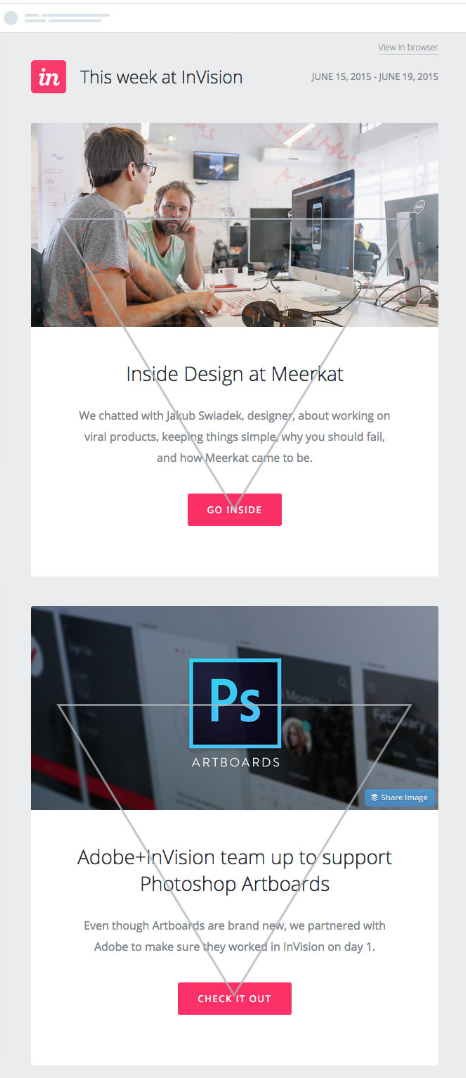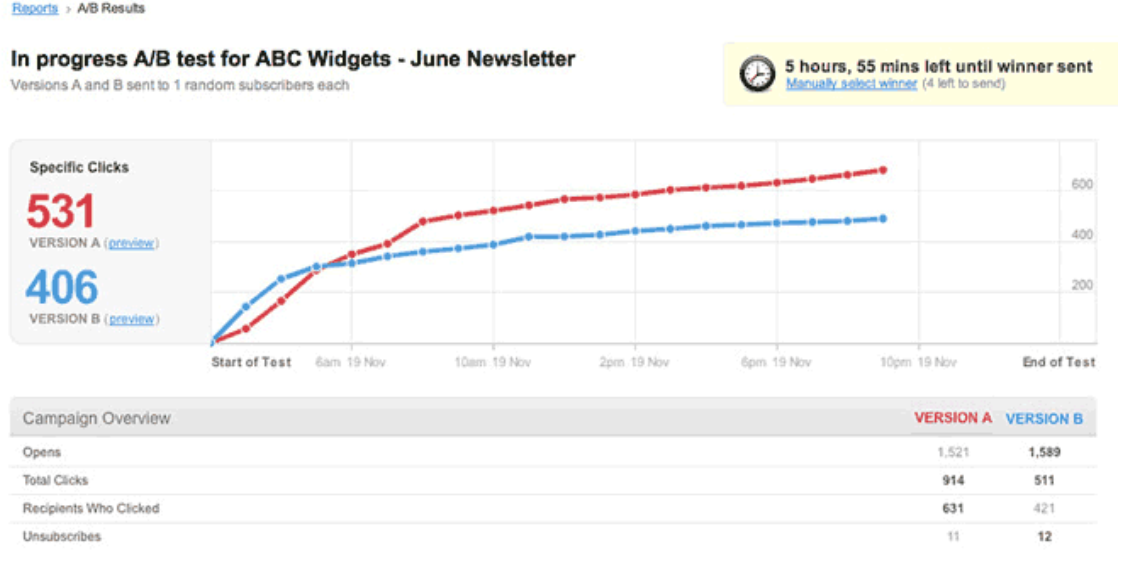Oct. 10, 2019

6 Ways to Improve Your Email Campaigns with A/B Testing
You have two equally convincing email marketing options in your hands: compelling content, an attractive subject line, and a highly-personalized layout. Of course, you can’t run both campaigns—so now it’s now your decision to pick the one that will work best for your audience.
A/B tests can help you see which of your options are more effective. Otherwise known as split testing, A/B testing is a tried and true method of comparing two variables. In email marketing, it means sending two different versions of a campaign to two different groups and seeing which one can drive higher conversions.
Here are some of the most common email marketing variations that companies consider:
- Subject line: “Check out this deal!” vs. “We have something exciting for you!”
- Human element: A customer testimonial vs. a message from a company executive.
- Personalization: “Dear Lisa,” vs. “How’s it going, Lisa?”
- Call-to-action: “Purchase now” vs. “Grab this Limited Offer”
According to eMarketer, 6 in 10 marketers use A/B testing to improve their conversion optimization. So how do they do it? We’ll show you a couple of successful A/B testing methods from various email marketing campaigns so you can begin implementing testing into your strategy.
- Come up with a hypothesis.
At the core of an A/B test is the idea that a certain email marketing campaign works. You have to know why you’re comparing two variations with each other, and why you think variation 1 could perform better than variation 2.
Some hypotheses that companies have used include:
- The word “free” in the subject does not work anymore
- Placing the customer review in a box will highlight its importance
- Changing the font color of the word “SALE” from yellow to red will make it more memorable
- One large-size image is better than four small-size ones
- Specific offers can drive more conversions than generic ones
It is important to look at all of the elements of your email marketing campaign. Don’t forget that there will always be another way to do something, whether that’s the placement of your logo or the use of buzzwords, so keep on testing.
2. Use the I.C.E. method.
This infographic sums up all you need to know about A/B testing. It also highlights the success of the Impact-Confidence-Ease (I.C.E.) method by Sean Ellis of Growth Hacking fame.
Based on the I.C.E. method, these are the questions you need to ask before launching an email marketing campaign:
- Impact: How big of an impact will changing this element have?
- Confidence: How confident are you that this change will have a positive impact?
- Ease: How easy is it to implement this A/B test?
3. Get up-to-date on design.
Every so often, the world of design changes and takes many companies along with it. From logos and colors to font types, everyone tries to catch up to look more modern.
Don’t get left behind. Today’s online users adapt easily to changes in visuals and aesthetics. In fact, many of them base their purchase decisions on how well email content is designed or conceptualized.
Remember, what looks good now might not look good tomorrow, so always be ready with those campaign variations.
However, there are design principles that have worked for quite some time. This particular principle (shown in the example below) makes for easy readability and you can use it on the emails you will run an A/B test for.
 Source: Campaign Monitor
Source: Campaign Monitor
4. Optimize for devices.
Many users have several devices they’d like to use simultaneously. Whatever email marketing campaign you test, it’s important to make sure that it’s readable on any device.
And it’s not as simple as iOS vs. Android. Devices that fall under these two categories also have different specifications, so it’s important for your campaign to be optimized for the little differences.
5. Test samples are important.
You can consider your A/B test successful if you send it to a randomized set of people. It is also ideal to have a larger test sample, but that would probably cost more. Depending on the requirements of your email marketing campaign, you can run it by a small batch and then, based on the results, send to your entire email list.
6. Monitor, monitor, monitor.
You can also check your A/B tests using sophisticated tools. The graph below compares email marketing campaigns based on selected parameters such as open rates and click-through rates.
As you monitor, you may already observe that one is more successful than the other. At this point, you can decide to cancel the test, save money, and send the winning email to the rest of your subscribers.
 Source: Campaign Monitor
Source: Campaign Monitor
Wrap up
If you have the luxury of time, it can be fun to take apart entire email campaigns and study each of the elements in-depth.
However, as a budding business, you can only do so much within a given day. A/B tests are helpful in strategizing your email marketing campaigns to give you an idea of what your customers are looking for.
As you run additional A/B tests, you will be able to develop an entire portfolio of email marketing strategies that work for specific audiences. It’s actually a very productive exercise.
Book with us
Let’s accomplish what you are looking for, our team of experts are here for you.
Let's work togetherWarning: Working with our team may result in excessive creativity, uncontrollable 'aha' moments, and an addiction to perfect pixels. Please proceed with caution.



